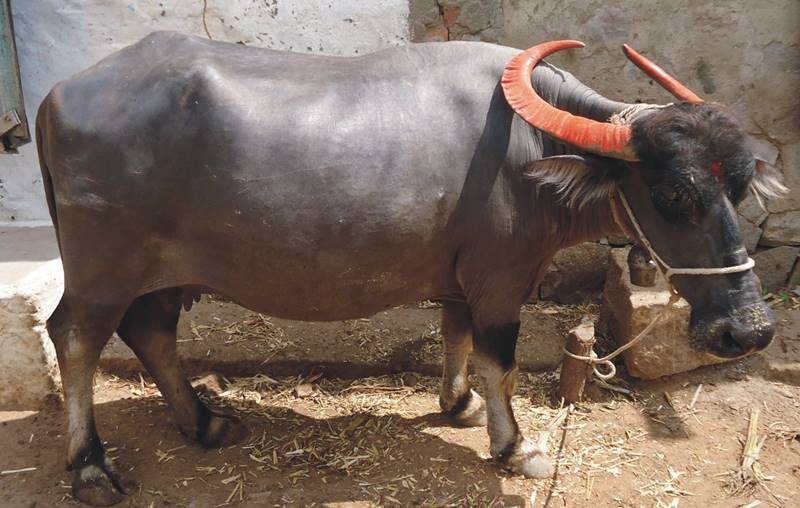What makes the Dharwad peda, an Indian sweet delicacy from Karnataka, so distinctive is that it is made from the milk of the indigenous Dharwad buffalo.
And now the Dharwad buffalo has another feather in its cap as it has recently been accorded national recognition by the ICAR-National Bureau of Animal Genetic Resources. This indigenous variety of buffalo now has an accession code number – INDIA_BUFFALO_0800_DHARWADI_01018. Henceforth, the code will be used for further research and study on this breed.
“The Dharwad buffaloes have been around for hundreds of years. It is indigenous to this area,” VS Kulkarni, head of the animal husbandry department, told Gaon Connection. “We have been trying to get recognition for this breed of buffaloes, that deserved recognition, and finally the National Bureau of Animal Genetic Resources, acknowledged it,” Kulkarni added.
Also Read: The disappearing buffaloes of Bhadawar
Traditionally, these buffaloes are allowed to roam freely and are rarely tied up, said Kulkarni. “People would keep leftovers from their day’s meal in a pot and feed that to the buffaloes. Even today this practice is followed,” he said.
The department of animal husbandry of the Agriculture University, Dharwad, played an important role in getting recognition for the indigenous breed of buffaloes.
The Dharwad buffalo is low maintenance. And its yields are high. The buffaloes are ready to give milk by the time they are 17 to 20 months old, said the scientist. “Each Dharwad buffalo is capable of giving up to one thousand five hundred litres of milk during the lactation period. If the buffaloes are given high quality cattle feed, their yield will be even more,” Kulkarni said. The milk has seven per cent fat in it.
Half mooned shaped horns, and deep black hides, give Dharwad buffaloes their distinctive look. There are nearly 1.4 million Dharwad buffaloes in North Karnataka.
Dharwad buffalo’s UP connection
The Dharwad buffalo has a significant connection with Unnao in Uttar Pradesh! Anecdotal evidence suggests that 175 years ago, Ram Ratan Singh Thakur moved from his native Unnao to Dharwad in order to escape an outbreak of plague. He began to make the pedas that gained fame as the Dharwad peda, which also has a GI tag.
“The pedas do not spoil for days and there are stories of how these would be shipped to the queen of England in the nineteenth century,” Kulkarni said.
With the recognition awarded to it by the National Bureau of Animal Genetic Resources, the Dharwad buffalo now joins the hall of fame of other indigenous cattle in the country such as Bhadawari (Uttar Pradesh and Madhya Pradesh), Jafarbadi, Mehsana, Surti, Banni and Kalahandi (Gujarat), Marathwadi, Nagpuri, Padhanpuri (Maharashtra), Murra (Haryana), Neeli Ravi, Gojri (Punjab and Himachal Pradesh), Bargur, Toda (Tamil Nadu), Chhattisgarh (Chhattisgarh) and Manda and Chilkha (Odisha).
Read the story in Hindi.


















